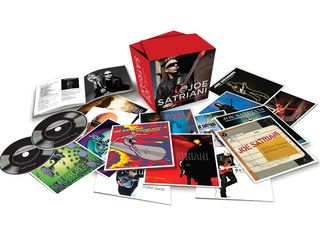
Joe Satriani talks The Complete Studio Recordings album by album
Two years ago, when the idea of compiling a career retrospective box set of his studio albums moved beyond the talking stage, Joe Satriani was prepared to have a few nitpicks. He was surprised, however, that what first raised his eyebrows had nothing to do with music. “I looked at the jackets I wore on the album covers and went, ‘What was I thinking?’” he recalls with a laugh. “Everybody’s got certain photos from their past, but when you make records, and if you’re lucky enough to have a long career, those old fashions can stay with you.”
Soon enough, as he began the process of reviewing his earlier albums, Satriani’s predilection for perfectionism threatened to overwhelm him. “I just wanted to do everything all over again,” he says. “Rewrite, replay, re-record, remix – you name it, I wanted to change it.”
While nothing as extensive as re-recording took place, Satriani and his longtime engineer and producer John Cuniberti did a thorough remastering job on the guitarist's complete catalog, everything from 1986's Not Of To Earth to last year's Unstoppable Momentum. But before the project got too far down the road, Cuniberti sent Satch an e-mail that put things in perspective.
"It was an Andy Warhol quote, and it's something that really stayed with me," Satriani says. "It goes like this: 'Don't think about making art. Just get it done. Let everyone else decide if it's good or bad, whether they love it or hate it. While they're deciding, make even more art.' That was John's response to my agonizing over everything. You need a little reminder now and then about that kind of stuff, the big picture."
Legacy Recordings gave Satriani and Cuniberti carte blanche in terms of budget and schedule, allowing the two to go back and bake tapes, resample sounds and scrutinize each track to their hearts' content. “As we went through the material, I became thrilled at what a great opportunity it was," Satriani says. "We were able to right some of the wrongs of past production, to tell the stories correctly. Sometimes records can be mastered in the heat of the moment – everybody's nervous; there's a release date to meet – so hindsight can be a real blessing."
Box sets offer fans the option of going the episodic route or diving in for a full-on binge listen. An extended, chronological airing of the entire Satriani package reveals the many sides to the veteran guitarist – playful, devilish, wildly eccentric, deeply lyrical and unabashedly over the top – but it also demonstrates the limitless extent of his ideas.
"You always hope that something this ambitious can fulfill a lot of purposes and expectations," Satriani says. "As for myself, it allows me to sit back and really appreciate everybody else's performances a lot more this time around. And I feel that way about all the different levels of participation from the guys at the label; my manager, Mick Brigden; and of course, the engineers and co-producers: John Cuniberti, Mike Fraser, Glyn Johns and Andy Johns.
"What I'm really happy about is how great everything now sounds. John knows my music from more angles than anybody, and he really got to the bottom of everything. You can listen to two or three hours of my music now without your ears getting fatigued." He thinks for a second, then chuckles. "Whether you get sick of me, that's up to you, but you'll sure love the way this sounds."
Joe Satriani: The Complete Studio Recordings, available on April 22, can be pre-ordered at Amazon. It is also available for pre-order as an Exclusive "Chrome Dome" USB Version at Satriani.com.
Additionally, you can pre-order the “Chrome Dome” USB Version (see photo below) in a bundle with Satriani’s upcoming autobiography, Strange Beautiful Music: A Musical Memoir (due out May 6) – both autographed by Joe himself – at Satriani.com. Save $20 by pre-ordering both today.
All pre-orders of the bundle at Satriani.com include an instant delivery of an exclusive MP3 download of the re-mastered Crush Of Love and also an exclusive excerpt from the book (in PDF format).
You can also pre-order Strange Beautiful Music: A Musical Memoir at BellaBooks.
On the following pages, Joe Satriani discusses The Complete Studio Recordings album by album.
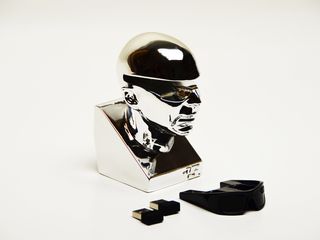
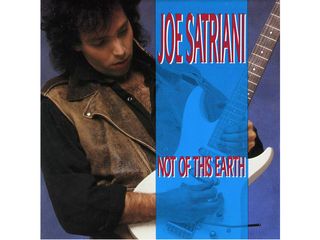
Not Of This Earth (1986)
“It's a funny little thing that I realized on this last tour. I was talking to [keyboardist] Mike Keneally and [bassist] Bryan Beller about some song we were doing off the new record. We were talking about harmonic clusters, and I said, ‘You know, this is something I really want to do. It may look like a conflict of melody and harmony, but I’d like to see how far I can push it.’ I said, ‘Eighteenth-Century counterpoint is really great, but we're in a whole new world now, and I'm going to go in the opposite way as far as I can.’
“I wasn't thinking that I was making a bold statement or I had come to some great moment of clarity about the way that I like to compose, but I remember thinking about what I said, and I thought to myself, ‘Really?’ I went back and started looking at some of my songs, and I went, ‘Wow, this is a good way for me to understand just for myself what I've been doing.’
“I got a push in high school from my music theory teacher, Bill Westcott. I remember the day he sat me down at the piano and said, ‘Listen to this.’ He was playing these two chords that were moving in contrary directions, and he was trying to explain some modal thing to me. I remembered listening to that and going, ‘Damn! You know, that's not 18th-Century counterpoint. That's not what we've been studying and working on.’ He said, ‘Yeah, obviously not. As a matter of fact, it's completely against it. These are things you can do. You can go against.’ It was a sound I was waiting to hear, obviously, because it shows up in all of these records.
“I think the title track starts off with a bold statement, possibly one of the boldest statements an electric guitar player can possible make. In other words, if you listen to everybody else's records from the ‘80s, it’s ‘Listen to me. I'm a great guitar player.’ I start out, the iconoclast, and I say, ‘Screw everybody else. What everybody thinks is a bold statement, I am going to come out in a completely different way.’ What do I do? I come out with these cluster chords that right from the start say, ‘What key am I in? Go figure it out for yourself.’ It's funny. It just seemed like the most fun and interesting thing for me to hear. I wasn't scheming – I didn't even know the importance of what I was doing, nor did I think there was anything important about it.
“When I listen to the high-res 96k remastering of the record, it's almost like I’m sitting in a beautiful antique car: ‘Wow, the luxury of yesteryear. Look at the detail everybody put into everything.’ At the time, of course, it was stark and modern sounding to us, but I look back on it and it sounds patina-ed almost, or like it's got a bit of antiquity to it now because of how we did it, just the analog quality of it.
“We were purposely going against the grain. I literally showed up at the studio with no amp. I think what we wound up with was a Pro Reverb or something like that. We recorded everything quietly except for maybe one song; for that I brought in a Marshall that I had been using in The Squares. Around this time, I was so sick of the cult of vintage. I had been teaching at a guitar store, and day after day people would come in and say, ‘Oh, look at this. It's a '54 but it's got a '56 screw.’ Or ‘I'll pay you double if it has the right screw.’ All these people were spending more money than I thought I'd ever see, and they couldn't play for shit.
“I thought, ‘This is where it's going? People are obsessing about the vintage quality of things, and they're not actually playing anything? They've got no style, nothing to say.’ So I was like, ‘I’ll just show up and use whatever amps are in the closet. I'm gonna use this little Scholz Rockman. How about that?’ That was just me refusing to go along with the crowd.
“It's funny how the whole thing worked out. It was fun. The sheer joy that [engineer and co-producer] John Cuniberti and I had listening back to a song like The Enigmatic – knowing that no one else would be brave enough or stupid enough to record it, to spend actual hard-earned money on music like that – it just made us happy.”
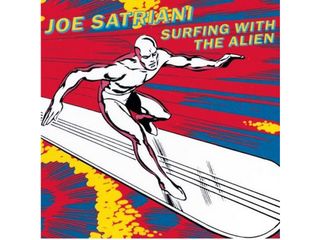
Surfing With The Alien (1987)
“It was an album that allowed me to bring in more of my roots. That was the plan. I remember explaining what I wanted to do to [Relativity Records president] Barry Kobrin at a China Club gig I was playing for them: ‘Look, I just want to celebrate all of my roots. I want to somehow bring in everything that's happening now with everything that I grew up listening to – Chuck Berry and Hendrix and everything – and I don’t want to be ashamed to celebrate all of that.’
“He just didn't get it. I think [A&R man] Cliff Cultreri was my only guardian angel through that whole period, because he kept telling Barry, ‘You're wrong. We've got to give Joe the green light on this.’ I played a couple of new songs that night, and I think it was Satch Boogie that changed Barry’s mind. I had written most of it by then, and we pulled off some kind of a version of it in front of everybody.
“Somehow, he got it – he did get it – and that night was extremely important. The strength of that live performance is what made it happen. What I had expressed to Barry that night really was something I carried through, which informed my decisions day to day in the studio. I would say to myself, ‘I'm not really competing with what's happening right now. I don't have to think about what my comrades are doing, what the other independent labels are releasing and touting, records with the newest shredders.
“I said, ‘No, if you want to do Always With Me, Always With You, just do it. Just make it nice and sweet and simple. If you want to do a song like Hill Of The Skull, which requires very little technique, go ahead and do it.’ At the same time, with other songs like Midnight or Ice Nine, I was saying, ‘Yes, this is technical – deal with it.’
“But you know, there was also fun. I think songs like Surfing… or Hill Of The Skull or Echo were balanced by the sheer, unabashed fun of it all. There was a period in the mid- to late ‘60s where music got so serious. Nobody wants to hear something ponderous, no matter how good the musicianship is. It’s like, ‘Yeah, you’re brilliant. Now, can you entertain us?’"
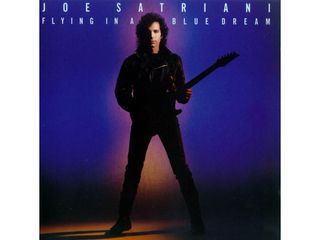
Flying In A Blue Dream (1989)
“A very stressful time. I finished up an incredibly difficult year of touring, writing some new material and recording. I went back in the studio, but there were other aspects of life to deal with. I went on the tour playing guitar for Mick Jagger, and at the end of the tour I picked up Giardia in Southeast Asia. Only I didn’t know it for a while – it went undiagnosed for the entire year that I was recording Flying.
"I would go to the hospital, and they’d be like, ‘Oh, this is what you've got. That's what you've got.’ Anywhere from my appendix to my brain – every time they had an idea about what was wrong with me, it was always wrong. And then my father had a stroke and went into a coma – he passed away. My grandmother passed away a few weeks after that. It was so stressful and crazy. And then I had braces on my teeth that year, for TMJ, which was bad timing to say the least.
“It was just so difficult and insane, but there was also this enormous amount of creativity. I was so excited that I had fans! [Laughs] Every time it got rough in the studio, all I'd have to do is close my eyes and think, ‘Remember when you were on tour. You started to play Always or Satch Boogie, and the crowd in that small club went crazy.’ I said, ‘That's what it's all about. That's the biggest gift the universe has ever given you. All this other stuff, it's going to work itself out. The braces are going to come out. They'll even figure out what's wrong with your intestines. Everything's going to work itself out.'
“That, I think, went into us not giving up on the record. John was extremely patient with me. We went into it with a bigger budget, and we were thinking, ‘Wow, we can sit here for three months straight and just record.’ Of course, after three weeks, it was like, ‘I can't take this. It's just too much work.’ It was 10 hours a day, with me being the only guy playing everything – and all this other stuff was happening. I was quickly getting burned out.
“The schedule eventually had an interesting effect on the composing and how everything wound up finally getting arranged and when things got recorded. John had started showing up with a video camera. He got some really grainy-looking but cool videos, one of which is me doing the solo to the song Can't Slow Down. Seeing it recently, I couldn't believe the amount of concentration on my face. I was just completely focused on this ridiculous solo. But, man, did I look bad. I couldn't believe how bad I looked. I was way too thin, very pale. I thought, ‘Oh, you poor guy.’ I don't want to go back there."
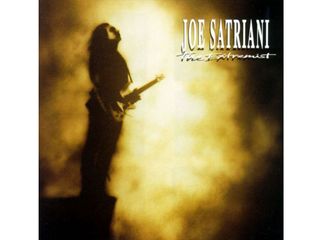
The Extremist (1992)
“The album itself is actually a very balanced representation of all three very important studio sessions. New Blues and Rubina's Blue Sky Happiness are from the Bearsville sessions as far as the rhythm sections go, with some overdubbing from the other two sessions.
“The guitar, most of the song Why and most of all the guitars on Summer Song, that’s from the San Francisco sessions; and then once we get to LA and we're working at Ocean Way, and we're finally at Record One with Andy Johns, that's where you got Friends, The Extremist, War, Cryin’ and Motorcycle Driver.
“It took a while, but I have to say that it was a labor of love. It turned out to be one of the bravest moves I ever made, because once again it was completely against the grain in that it was my homage to classic rock at a time when the grunge era was the most important thing happening in the music industry. Even though I was actually celebrating an accepted style of music, I actually wound up figuring out a way of being a total oddball of the moment. It was really pretty funny.
“When the record came out, we got resistance from MTV, which was very important at the time. But an interesting thing happened: It got this crazy offer from Sony and their electronic department. They were looking for an instrumental to sell their Walkmans and boomboxes, and they approached us with the idea of doing a commercial with Summer Song in it. The spot got played twice during every break of the MTV Awards.
“So this created a real buzz for Summer Song, and it wound up being my most successful radio hit in the US and internationally. It was an incredible flipping of fortune for a record that people were saying, ‘Hey, this isn't grunge. We don't want to touch it.’ All of a sudden, it became the one that really solidified my international standing.
“The record means a lot to me. It contains some once-in-a-lifetime performances by everybody concerned. It took persistence; we had to keep tweaking it and just not giving up on it. I’m so glad we saw it through to the end.”
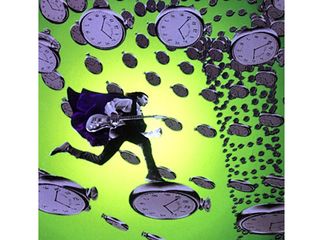
Time Machine (1993)
“I was on the Extremist tour with [drummer] Greg and [bassist] Matt Bissonette and [keyboardist] Phil Ashley. It was my first time going out with a four-piece band. We could do songs that we couldn't do before when we were only a trio. The songs were a little bit more like the record, and they started to sound bigger, so Cliff Cultreri said, ‘Let's do a live record.’
“We recorded in New York, Philadelphia and Boston, three nights in a row. John Cuniberti did the recording for us. We wound up with stuff that we thought was pretty good, but when I went back home I started thinking, ‘You know, this isn't enough for me.’ To just hear the live stuff wasn’t enough. I got this crazy idea that I would create a record that would go really far back. I started with my very first EP that was done with [engineer] Jeff Holt – this was the record that I put out on my own label, Rubina Records, before Not Of This Earth.
“I thought, ‘I'll pick the best of what we did on The Extremist tour, and then I'll pick some really great moments from the Surfing and Flying tours.’ We had some old recordings from the King Biscuit Flower Hour that didn't make the Dreaming #11 EP. Then I thought, ‘What else can I put in there?’ I started to look at our outtakes. At the time, it was the beginning of the box set craze.
“So I’m sitting there thinking, ‘You know, I’ve got much more interesting stuff than that.’ I had the song Baroque; I had Crazy, which is just this crazy little thing; a vocal song; Thinking Of You; even the Woodstock Jam, which I thought, ‘If I can get this released, I know people will probably want to crucify me for it. There will be 10 people out there that'll like it.’
“I started to get very excited about it, so I went to Cliff and said, ‘I’ve this crazy idea of a double album box set kind of thing.’ I told him about everything that was on there, how I researched all the clips and everything. So the idea of me recording just a couple more songs came up. I remember going up to Lake Tahoe, just vibing on the whole idea of Time Machine – I had the title before I had the song. I wrote the two pieces, actually, and then I reprised an old song from my past, from when I was a teenager, a Billie Holiday piece called All Alone.
“Then I said, ‘OK, let's do something different.’ I thought it would be good to get together with [bassist] Stu [Hamm] and [drummer] Jonathan [Mover] and see if we could record live in the studio, just to do something different and down to earth, something we had never done together.
“The whole album wound up being an explosion of creativity going in all different directions. It was like a treasure trove. I wasn't trying to have a hit single at all. It was all extrapolation and expression.”
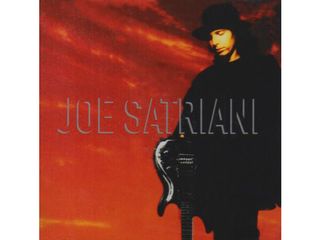
Joe Satriani (1995)
“Time Machine was put to bed, it's on its way out, and I got an odd call to see if I wanted to play with Deep Purple, which I said yes to. During the period where I'm getting ready to do two months with Purple – it was June and July of '94 – I'm thinking that I need to get the other record going, whatever that might be.
"I think the Benelux countries hadn't released The Beautiful Guitar yet, which was just a compilation of my ballads for those countries. And I really still felt like the song Time was an important piece of music from the Surfing record that I never could finish.
“I got together with producer Eric Valentine and gave him the tapes, and I think I gave a set of tapes to [drummer] Jeff Campitelli, too. I said, ‘I'm going on this Deep Purple tour. You guys just play with this independently and do whatever you want with it. When I’ll come back, maybe when I hear what you do it'll inspire me to see if it can work as one of the songs for this new record."
“When I came back, I was totally blown away with what Eric had done. We made plans to do the next record, which was going to be called Crystal Planet – there was a little bit of flipping going on with record titles.
“We recorded the first version of Cool #9 and we did Look My Way – just the vocals and drums, I think, maybe. We tried a version of Killer Bee Bop that never went anywhere, and then we had the song Time. Now, that one got finished! Unbelievable-sounding mix. Eric just did an incredible job. He was so in love with what Cuniberti had recorded way back in '87, the original tapes that had come from the Surfing sessions.
“For Time, all we had to do was come up with an arrangement for the ending because the rhythm guitars were there. Eric wound up playing a medium tempo 6/4 behind my 4/4 guitar. It's a crazy moment in the song, but it was inspired. Then I wrote a new melodic solo for the end, but that whole thing broke down because Eric really liked to work very slowly at the time. I just couldn’t deal with that, so I moved on and got back together with John Cuniberti.
“We finished what we thought was Luminous Flesh Giants, Cool #9, Look My Way, and we did some basic tracks, melody and a solo for the song Home. I think we did the beginning of Slow Down Blues.
“Then, once again, I just didn't think it was an album – this sort of echoes what had happened with The Extremist. I took a long period off and then got together with Andy's brother, Glyn Johns. He decided to get rid of a bunch of stuff, keep a bunch of stuff, and at the same time he threw me in the studio with a whole bunch of different musicians with an entirely different way of working. That's what really produced the final product.
“Some of the songs are hybrids of performances that go back to the Valentine sessions or the Cuniberti sessions, and some of them are completely brand new, just live in the studio, like S.M.F. or Moroccan Sunset and Killer Bee Bop. It turned out to just be a crazy record.
“Of course, the album got released the week that Relativity fell apart, bought out by Sony. Oh, boy, what a crazy period that was.”
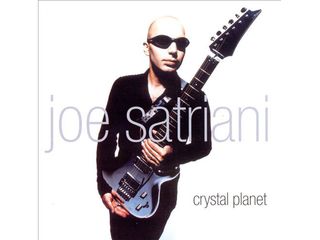
Crystal Planet (1998)
“This is a good period for me. Unlike some of the records that were marred with personal tragedies left and right, this one was smooth sailing until… well, we’ll get to that.
“I had a ton of material. I was very excited about recording with Jeff on the drums and Stu on bass, the three of us, because it was something that had just happened by accident – we really crystallized as a trio. We were feeling like we were in new territory, and I had these songs that once again celebrated, like all the other records, my idea about clustering harmonies and grooves and things like that.
“I did crazy things. I arranged every song so that each key was ascending – each new song in the CD’s sequence would come in at an ascending key. We were able to finally figure out how to get the song Time – the remix from Eric Valentine and myself – back into the record, so that was great. And the original title Crystal Planet finally made it, too. The album covers tons of ground.
“A lot of great new things were happening. I had written the entire album without making any audio demos. It was a weird: I got a metronome, a piece of paper and a pencil, and I would sit there and write all the songs. The first time we heard them was when we rehearsed for about four or five days.
“I didn't want any ‘demo-itis,’ and I didn’t want Jeff to be going, ‘That damn drum machine!’ This was really great for us because we got to experiment in the studio. It was the first time getting [keyboardist] Eric Caudieux involved in being sort of a catalyst in the studio.
“For a lot of the songs, Eric would create a mini techno band behind us. When we were out in the studio doing these live performances, we were hearing in our headphones the addition of maybe 20 handmade loops from Eric that would give us this feeling like we're really moving forward. It changed the way that we performed. Then, of course, when we mixed, we used maybe five percent of what Eric had put together, but you could tell that it had an effect on the way that we performed. It was so interesting.
“Pieces of music like Trundrumbalind were basically like a trio, but when we were tracking it we heard a ton of stuff from Eric. I think it helped us play in time and in tune in a different way than if we were listening to a click. It was really exciting.
“OK, so the album comes out, we go on tour, and we get hit with two big things. Number one, society decides that video games are the coolest thing ever, and number two, file sharing. It's a year before Napster really goes public, but file sharing in the subculture was huge. I just remember the record company going, ‘Oh, my God!’ Suddenly, 60 percent of all sales – new records, catalog sales, you name it – it was just gone. Our record came out, and you know, it’s supposed to hang out there a while. To see it die off so quickly was devastating.”
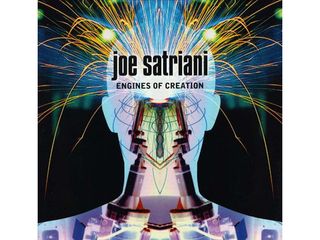
Engines Of Creation (2000)
“Again, the good vibes are continuing. This is probably the beginning of me recording more at home, because I decided with Crystal Planet to not even make demos. Now I'm going to go the other way. I thought, ‘What would be the great contrarian leap here?’ And that was to just fire up the laptop and see what I can do. I think I started using Logic at the time.
“I actually had written quite a lot of music. I had a proposal for Epic at the time, and I said, ‘Look, I can do Joe Satriani with an orchestra, Joe Satriani doing straight-ahead rock songs or Joe doing a techno-trance thing. I'm ready to go in any direction, and I'm going to be working with this guy Eric Caudieux. What are you guys interested in?’ They all came back and it was unanimous: ‘We'd all like to hear a techno-trance record.’
“Eric and I were just psyched to start recording in a completely different way. We used no microphones whatsoever, and everything was direct injection. We were using Pro Tools and Logic. I started out writing a lot of stuff on keyboard, and then I would send him MIDI files and just the craziest ideas. I realized that since I didn't have to worry about arranging or deciding exactly on the temperament of these recordings, it saved me from a lot of hours and hours of working things out. You have to remember, when you go to a studio, you're paying people by the hour, so you have to present them with a clear-cut set of requests: ‘It's in 4/4. This is the tempo. Play it like crazy. I need a fill here; I don't need a fill there.’
“This was the opposite. We could work on a song and not even decide who else was going to play on it until months later. It was very interesting, the composing process. We were able to build songs around the most unusual, again, once-in-a-lifetime performances.
“Having no time limit was great. I just worked on music and sent some things down. Eric would work on them for a bit; then I'd fly down to LA for two or three days, and he’d record me playing all sorts of crazy stuff. Then I'd leave and I'd come back – it sort of went like that. Then, as I’m writing more, he'd be rearranging all sorts of unusual virtual instruments around my live performances. It was great. When it was done, I just thought, ‘Oh, it's so exciting and it's new.’ I didn't worry about what radio station was going to play it or whether people were going to think I'd gone totally techno. I just said, ‘Don't even think about it.’”
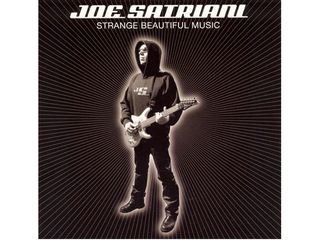
Strange Beautiful Music (2002)
“I remember mentioning to John Cuniberti when we were doing the remastering that I found myself listening to this album more and more. I'm not quite sure why that is. It just has a beautiful sound to it and is so eclectic. It’s a record where I think, ‘Really? I talked everybody into doing this? Wow… ’
“We recorded, I think,16 tracks for it and wound up with 14. I was fooling around with this seven-string guitar for the first time, working in more acoustic guitar, and then of course, Robert Fripp came over one day, which was really great.
“Before we started the session, I was making Robert a cup of extremely strong coffee in the kitchen. He taught me a little lesson when he said, ‘Can you please poor hot water in the coffee cup first and then let it sit for two minutes?’ Because then when the coffee's ready, you’re not putting it into a cold coffee cup. I always thought that was some sort of Frippism. I was like, ‘Wow, this is great. I've learned something today, and I haven't even started recording.’
“So we went downstairs to my studio, and Robert said, ‘Well, what do you want me to play?’ I said, ‘I don't know. Just start noodling around.’ At one point he said, ‘Produce me, Joe.’ It was a powerful moment. I remember thinking, Holy shit. 'How did I get here?’
“I recorded him about six times and played it back for him. He was searching for stuff, but he didn’t know what it was. Listening to it, there was something in the first pass that was what I had in mind, but I thought to myself, ‘A clever producer would never let the artist know the ultimate goal. He would just let the artist run free.’
“Sure enough, everything that he played co-existed with each performance. In other words, it was totally cohesive, and it was remarkable how he had done that. He actually gave me six or seven completely unique performances that I could use as an ensemble, and there was no conflict between any of them, which was really something. I was knocked out by that.
“I did a version of Santo & Johnny’s Sleep Walk. I don't know why I wanted to do it, other than the fact that I've always loved it. It’s one of my earliest memories of loving guitar music. I probably heard it in the back of a '48 Dodge that my family had, driving around.
“When I hear that song, I remember the smell of the horsehair seat and the hunch in the leather. Man, that thing was a broken-down car, but I loved it. I just had great memories of life, and that song was there as a part of it. But I remember thinking, ‘Wow, it’s so hard to play because I have to live up to my memory of it, all the good vibes I’ve collected over my whole life. So every time I play a note, I'd go, ‘Well, that's not good enough; that's not good as Santo & Johnny.’ It's very hard to live up to that.”
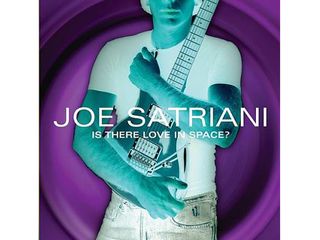
Is There Love In Space? (2004)
“More and more, I'm enjoying being an engineer at home. I'm also enjoying the touring more and more. Again, the side story behind all of these records, starting with Crystal Planet, is the touring thing. I’m doing longer tours; I’m going to more interesting places around the world. And what happens is, I come back and I'm energized about recording more songs and more music. I’m energized about putting in more performances that are about me and my fans and less about worrying about the old music paradigm, which is the hit single, television, all that stuff.
“I'm just like, ‘Oh, who cares? I'm just going to keep pushing my own envelopes.’ I know what my fans like. I'm not catering to them, but I'm saying, ‘All I have to do is be myself,’ because that's what I'm looking for.
“But I do continue to do things that I think are important and that fascinate me, so I'm working again with the seven-string guitar. I'm stretching the idea of how far I can go with a melodic instrumental song that has less, like, ‘look at me’ factor in it. Some of the songs are just ‘over-the-top-look-at-me,’ and then other songs are not, like If I Could Fly and Just Look Up. Then, of course, I bring back some vocals for comic relief, just being more experimental, I guess.”
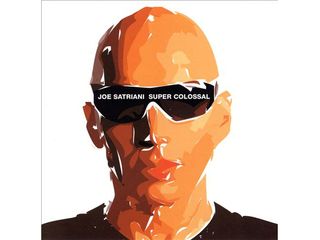
Super Colossal (2006)
“On this record, I played all the bass, keyboards and all the guitars, obviously. Eric Caudieux may have done a string patch here or there – I can't remember. I got two drummers – Jeff Campitelli is doing most of it, and Simon Phillips did four songs on his own in his studio.
“It was a lot of fun to do because I felt like I was better at recording myself at home. It should be mentioned that with each record, John Cuniberti helped me out a lot, offering so much guidance about being able to record myself properly. John and [engineer, co-producer] Mike Fraser had to deal with these recordings that I was bringing to them, and each time they'd say, ‘Now, next time could you… ’ Like John would say, ‘Please don't use any more limiting. Let me do that later.’
“There were negatives that I had to deal with. I remember thinking I might not be able to tour again because I hurt my right hip – I did something, I don’t know what. I remember hobbling around a lot thinking, ‘Hmm, what's going to happen once the record's done? People want me to walk around on stage with a guitar.’
“We went to Armoury Studios in Vancouver, Jeff and myself, and spent a week or two just doing drums. It rained for 30 days straight, which drove me crazy. Not only is it tough to be in the studio for 10 hours a day, but it was just rain and gloom. It was in November, so we’re talkin’ cold and wet. Thank God I did 99 percent of all my work ahead of time in sunny California because I just would have put in lots of bummer performances otherwise. Even so, it was a great set of sessions.
“Crowd Chant is on the record. We just didn't know until everybody was there and we did a couple passes if it was going to work out or not. Mike Fraser was recording a group of 30 people, and after about three or four takes he said, ‘It's getting too big.’ So the problem went from ‘Can we make it big enough?’ to ‘Oh, my God, it’s too big.’ That was a fun moment. It made me forget about my hobbling.”
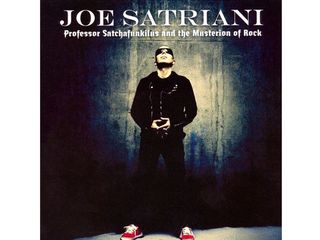
Professor Satchafunkilus And The Musterion Of Rock (2008)
“I definitely went in wanting make a very eclectic record and trying to sound different than before. This was a very risky album in one way because I said to myself that I wasn’t going to shy away from some weird sounds.
“I think the first four songs are pretty challenging sound-wise. They're very different. Musterion is a really weird song. Then I came up with these two pieces that I decided to do as a trio, full-length jam songs, Asik Vaysel and Andalusia. That was just something totally different to try to do to pull off on an album, that kind of out-and-out three or four minutes of just straight soloing.
“It was a very interesting record for me, but I have some funny feelings about it. Sometimes I wish I could have changed how I arranged and mixed some of the pieces, or maybe I could have used a different amp or a different guitar here and there. Once we took the album live, it made me realize that, once again, my reality is how I deal with the new music live on stage. I play these things night after night, and I explore them.
“What I mean is, the fans wind up relating to the album versions, but I really don't. They're just the very first step for me. Playing Revelation every night on tour is a big deal for me emotionally. You can only do one version on an album, but live the song can change in so ways.”
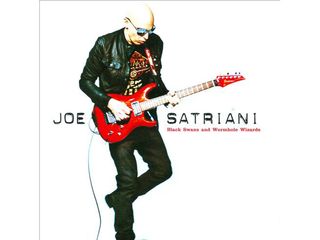
Black Swans And Wormhole Wizards (2010)
“This intersects with Chickenfoot, the Live In Paris set, and then there was The Essential Joe Satriani. With that, I was actually feeling like, ‘Wow, I have actually done a ton of work.’
“Leading up to this record, my mom passed away. So there was a lot of intensity with life happening around the album, but I guess I held onto a couple of things that I felt were really important, which was the relaxing of what I thought I could get away with compositionally. I was really interested in making sure that we had these big, fat, comfortable grooves – Dream Song, Two Sides To Every Story and Wind In The Trees.
“I was very cued into Jeff Campitelli. There are a lot of things that are so unique to his style of drumming, and I really wanted to capitalize on them. I was also very careful about making sure that we had time to craft the record. It was a new band – Allen Whitman [bass] and Mike Keneally. I've known Allen forever. He was in a couple of bands when Jeff and I were in The Squares, and we used to do a lot of gigs together in the clubs. It was really great to put those guys together with Mike because Mike is just so different from them.
“Because of Chickenfoot, I’m getting more into this idea of recording live with other musicians, but there are still certain things that I couldn’t do unless I had the luxury of working alone, without anybody bugging me and pulling me in one direction or another. It's a balance.”
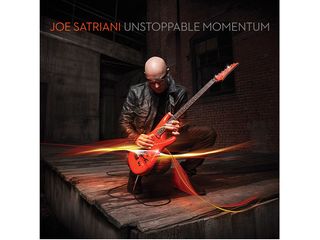
Unstoppable Momentum (2013)
“Once again, the idea is to go that one step further, inviting musicians into the studio without knowing what they're going to do at all. This particular record, like some of the mid-areas of the catalog, really benefited from the remastering.
“When I went back and listened to the album, I thought, ‘Oh, wow… You know, I could have done it differently.’ And what’s funny is, I'm not supposed to have those thoughts until 10 years later. This record only came out a year ago.
“When we started the box set, there was a question as to whether we would include the new album, whatever that was going to be, but then I wound up finishing the record and putting it out, and then we had the book coming. We decided to hold the box set and put it out around the same time as the book, so then we realized that we should put Unstoppable in the set.
“And then there was the thought, ‘Should we remaster it?’ No one could figure out if it was a good idea or a bad idea, so John just said, ‘Oh, what the hell. I'll just redo it and we'll decide later,’ which was pretty smart, really. What John did is make it sound remarkably better, and that's his secret.
“I was getting burned out on doing the box set, and I was knee deep in doing the text for the book. John didn't fill me in on details like he did with the other records, but when he sent me a couple of the remastered Unstoppable songs, I was like, ‘Wow, it sounds bigger and more open.’ His experience in doing just that to the entire catalog put him perhaps in the right mood for the new album.”
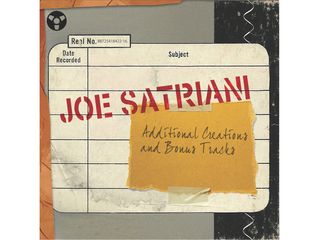
Additional Creations And Bonus Tracks (2014)
“There's a remix of Time Machine, the title track of that album. There's new mixes of the original version of Cool #9 and Luminous Flesh Giants, which features Eric Valentine on drums and doing various other things. Some of the elements from those tracks were incorporated into the semi-live studio version for the eponymous release – like power chords or some string tracks – but we have the original versions there.
“We have the remastering of the rock mix or radio mix versions of Borg Sex and Flavor Crystal 7 with Jeff Campitelli on drums. We have the original techno mix of Until We Say Goodbye, the version that was removed from Engines Of Creation in favor of the rock mix – just crazy, right?
“We have a remastering of Turkey Man, which is a bizarre recording that has to be credited as being written by Eric and myself. That was part of the original Additional Creations bonus CD that was a giveaway at the time when Engines came out.
“With some bonus tracks, Slick, The Eight Steps, Dog With Crown & Earring, Tumble, Ghosts, Heartbeats, Longing, and then an alternative version of Z.Z.'s Song that had these… we used to call them whale noises. I think that Eric Caudieux may have added them at my request. This goes back to the Crystal Planet final sessions. We were all wondering, ‘Should it just be Joe playing his guitar or should we add whale noises, those funny little things?’ I think that was Eric’s take on the embryonic journey.
“In the end, we decided no funny noises. I believe that was Mike Fraser’s call: ‘Get those noises out of there. Just Joe's guitar!’”
“I put on anything that I thought never got its fair shake, stuff like Cool #9, Luminous, Eric's original mix of Until We Say Goodbye and all the other stuff that got left off of Bonus Tracks. I just thought, ‘Why hold it back?’ I'm completely surprised, over and over again, by fans coming up to me and saying, ‘Man, Turkey Man is my favorite song.' I'm totally blown away by that. I remember Glyn Johns once said to me, ‘It's not your job to decide what people should like. Your job is to play your guitar.’ So if you remember those things, all those famous quotes and sayings, they sort of keep you moving forward. They help to inform you as to how to step out of your own way in projects like this.”

Joe is a freelance journalist who has, over the past few decades, interviewed hundreds of guitarists for Guitar World, Guitar Player, MusicRadar and Classic Rock. He is also a former editor of Guitar World, contributing writer for Guitar Aficionado and VP of A&R for Island Records. He’s an enthusiastic guitarist, but he’s nowhere near the likes of the people he interviews. Surprisingly, his skills are more suited to the drums. If you need a drummer for your Beatles tribute band, look him up.
New book Dust & Grooves Vol.2 tells the tall tale of the scam records that could make collectors a fortune
![Session guitar ace Tim Pierce wears a ballcap and poses with a Powers Electric guitar [left]; a young Jon Bon Jovi rocks Super Rock 84 on Bon Jovi's first tour of Japan. His shirt is open. His hair is big. And he has a red Fender Stratocaster slung low by his hip.](https://vanilla.futurecdn.net/cyclingnews/media/img/missing-image.svg)
“Jon had the laser-focus about becoming a rock star at age 19... he knew how to negotiate the business”: Session ace Tim Pierce on his blazing solo on Bon Jovi’s Runaway – and the hunger that propelled Jon Bon Jovi to superstardom
New book Dust & Grooves Vol.2 tells the tall tale of the scam records that could make collectors a fortune
![Session guitar ace Tim Pierce wears a ballcap and poses with a Powers Electric guitar [left]; a young Jon Bon Jovi rocks Super Rock 84 on Bon Jovi's first tour of Japan. His shirt is open. His hair is big. And he has a red Fender Stratocaster slung low by his hip.](https://vanilla.futurecdn.net/cyclingnews/media/img/missing-image.svg)
“Jon had the laser-focus about becoming a rock star at age 19... he knew how to negotiate the business”: Session ace Tim Pierce on his blazing solo on Bon Jovi’s Runaway – and the hunger that propelled Jon Bon Jovi to superstardom
Most Popular






